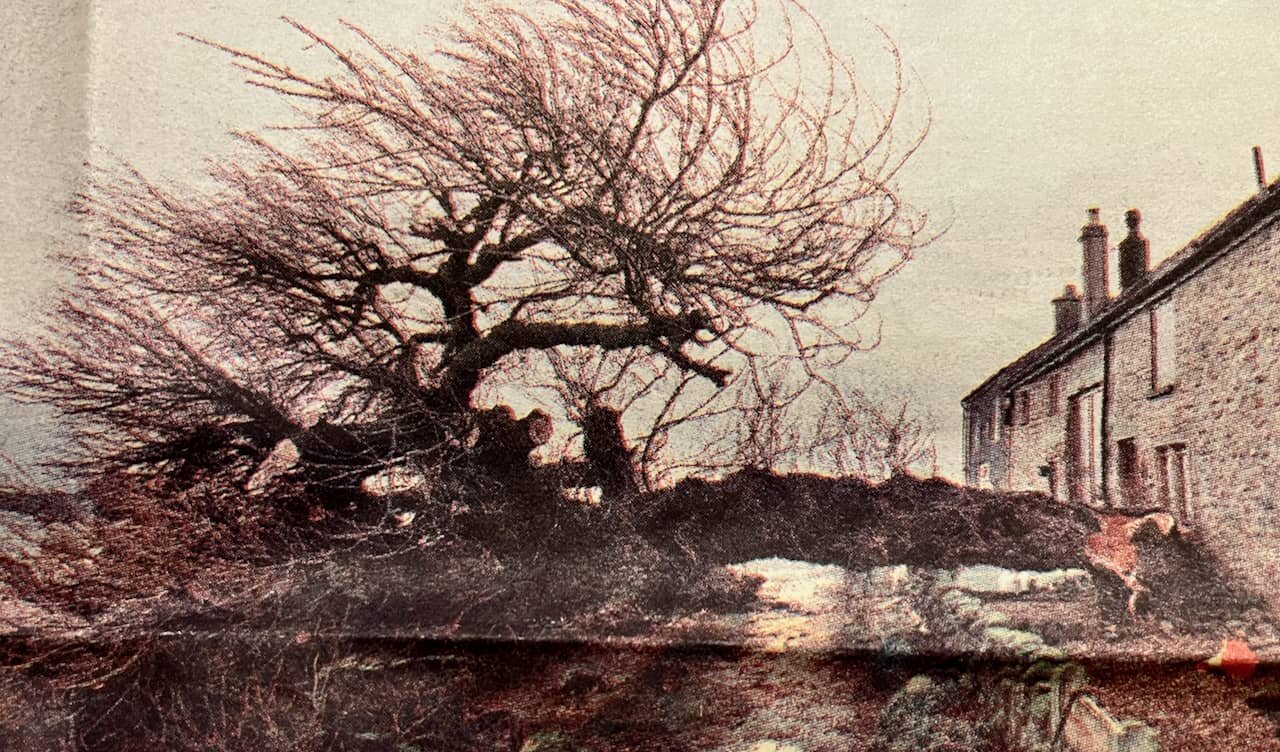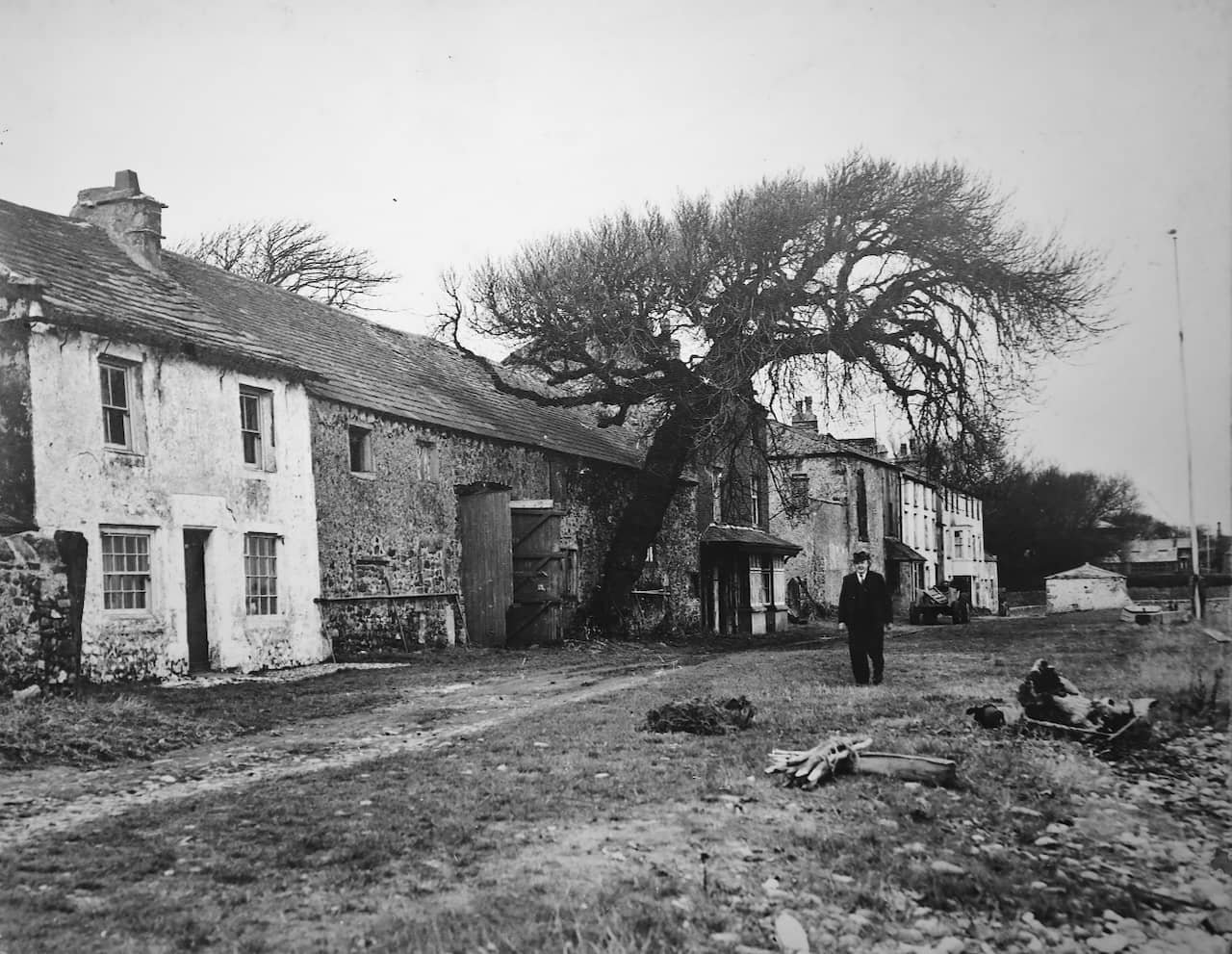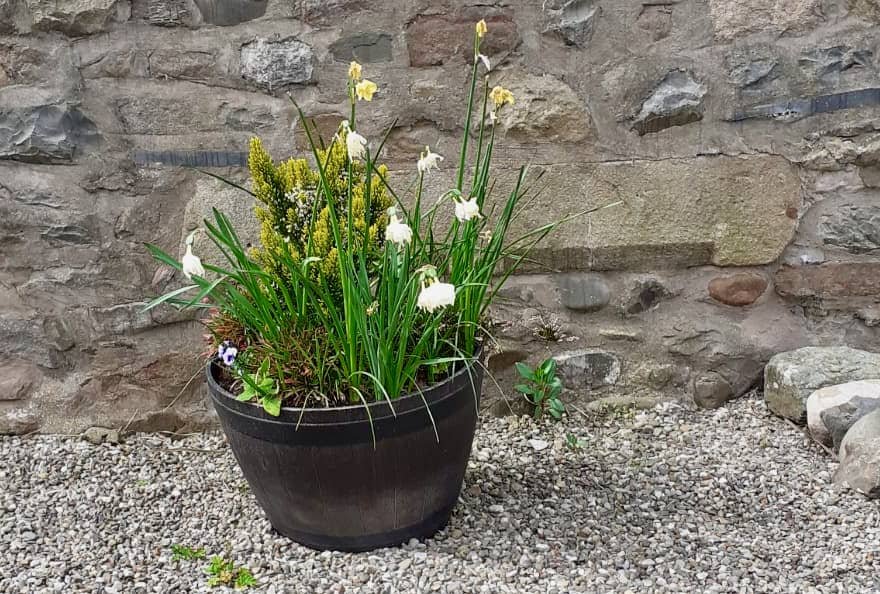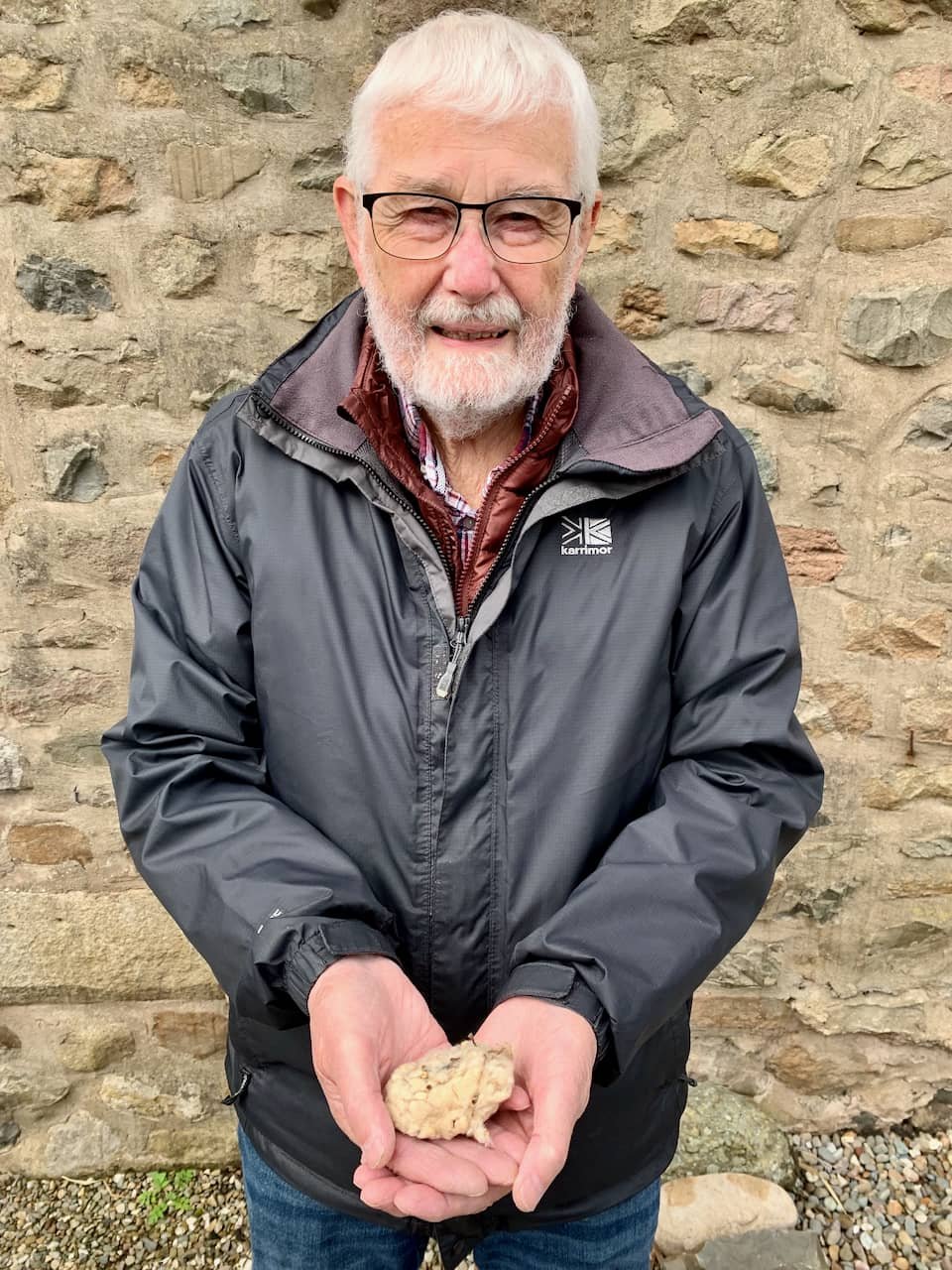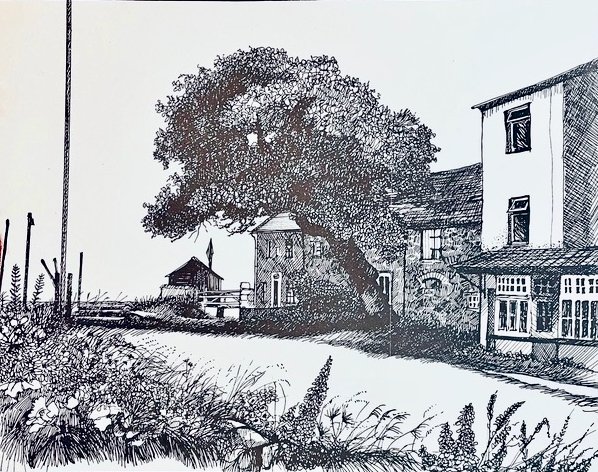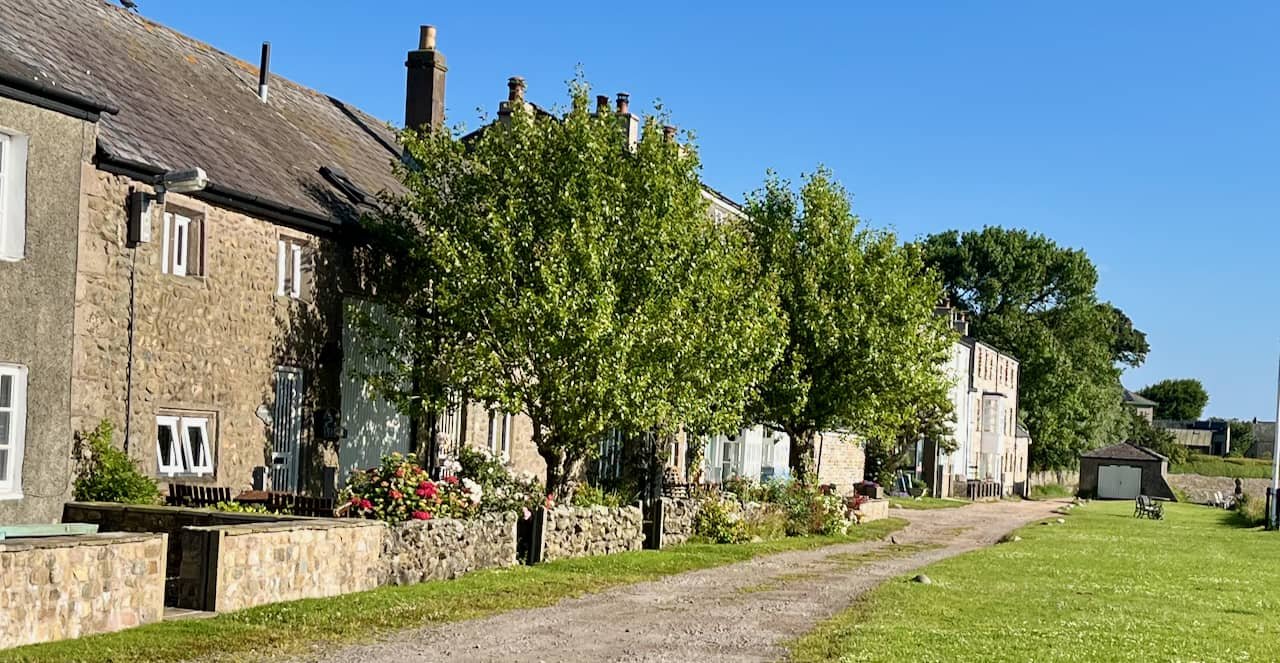The Cotton Tree
A Symbol of Sunderland Point
The Cotton Tree in its prime c1890: A John Walker photograph courtesy Lancaster City Museums.
On the first day of January1998, during a storm, the iconic cotton tree on Second Terrace at Sunderland Point fell over. To the residents of Sunderland Point and many of its frequent visitors, the loss of this old friend must have had the impact of a bereavement. It was also a loss to the species to which the tree belonged, for the cotton tree was a black poplar, Populus nigra, which is rare in the wild in the British Isles, only about 7000 remain, worse still, it was a female of which only 600 remain.
The aged tree shortly before its fall: The Visitor April 21, 1998
The Fallen Tree: The Visitor January 1998
Legend has it that the cotton tree arrived as a seed in a cargo of cotton in the 18th century when Sunderland Point was an important port trading with the Americas. Its name is derived from the cotton like fuzz which decorated its catkins. Alas black poplar is not native to the Americas, although it was introduced by early European settlers in north America, it seems more likely that the seed was windblown from a local tree. Black poplars were often deliberately planted, sometimes to mark parish boundaries, but the Sunderland Point tree probably had a natural origin.
Cotton Tree Cottage (first left), next to the barn and the tree, 1950s: From the collection of Alan Smith
The properties at the southern end of Second Terrace were originally mainly farm buildings. The end terrace house, the aptly named Cotton Tree Cottage, has a date stone bearing the legend WTM 1751, the adjoining buildings were, originally, a cottage and a barn dating from the same period. The buildings probably preceded the tree which sprouted from their foundations. There is an enigmatic stone lintel set into the wall, just above ground level, in the same location as the tree which may suggest other explanations.
The stone lintel (behind the planter) set into the barn wall: Photo Moira Winters
Black poplars should not be planted close to buildings as their root system and love of water can disturb foundations. Black poplars are also known for a tendency to lean from the vertical, as did the cotton tree, and can live for 200 yrs, so the tree and the barn survived against the odds. Maybe, in a symbiotic relationship, the barn sheltering the tree from the prevailing south westerly winds and the tree drawing its water from the river side of the barn. Black poplars are mainly found south of a line from the Lune estuary to the Humber estuary; the cotton tree was technically out of bounds.
A postcard photo of fishermen and summer residents gathered by the tree: Website collection
The cotton tree provided a meeting point and shade and shelter for generations of Sunderland Point residents, sailors, fisherfolk and visitors. Its canopy hosted and fed birds and insects including bees, hawk moths and maybe, longhorn beetles a variety of which, known as the house longhorn, produces woodboring larvae which can do serious damage to structural timbers. Black poplars are dioecious meaning that male and female flowers are on separate trees, both produce catkins, the females, fluffy cottony ones. The males produce red catkins, the Devil’s fingers in folklore; it is deemed unlucky to pick one up.
Dave Clarke holding ‘Cotton’ from the original tree: Collection of Scottie Wilson.
In times gone by the wood of the black poplar had many uses. It is shock resistant and fire resistant. Wagon wheels and brake blocks were made from it also wooden flooring, roof structures and household items such as bowls. In the Reading Room at Sunderland Point there is on display a large disc of timber, cut from the fallen tree, which has been expertly turned and polished by Terry Harvey and donated to the Reading Room by him, providing a lasting memorial to this sadly missed resident of Sunderland Point.
The bowl made from the tree by Terry Harvey: Collection of Dave Clarke
Black poplar has a link to Greek mythology. Phaethon, son of the Oceanic nymph Clymene and the sun god Helios persuaded his father to let him have a go at driving his blazing chariot across the heavens. Reluctantly Helios granted permission but Phaethon, a young lad, could not control the powerful four horse team hauling the fiery chariot. The wayward vehicle veered too close to the Earth which was scorched and too far away freezing it. Disaster threatened and Zeus, to save the Earth, zapped Phaethon with a thunderbolt, The lad’s body fell into the river Eridanus. Phaethon’s seven sisters were so upset that they cried for months: that annoyed the gods who turned them into black poplars and their tears into amber for which the Eridanus was noted. The sisters had, without permission, yoked up the horses for Phaethon. Those yokes might have been made from black poplar.
Extract from ‘A Lancashire Village 1908’ by William Wells: Courtesy City of Edinburgh Museums.
The cotton tree features prominently in many art works and photographs of Sunderland Point and its image, leaning gracefully towards the river Lune from the foundations of the old barn, must adorn the walls of many homes throughout the land.
A Ray Schofield sketch of the Cotton Tree: Courtesy Emily Fagan
But, it is not the only famous cotton tree, prominent among others, and with a tenuous link to Sunderland Point, is the cotton tree of Freetown the capital city of Sierra Leone. Freetown was founded on 11th March 1792 by a group of formerly enslaved African Americans who earned their freedom by fighting for the British in the American Revolutionary War. The Freetown cotton tree was not black poplar but kapok ceiba pentandra and was already mature when the founders arrived.
The once majestic ‘Cotton Tree’ in Freetown, Sierra Leone: Source Internet, Ryan Roche
On 24 May 2023 after a period of unusually heavy rain in Freetown a large section of the tree fell over. Part still survives but the fallen section was preserved with the intention, as at Sunderland Point, of forming a memorial display.
There is no way of knowing if the Sunderland Point tree ever seeded new life, but nature is tenacious, runners from the tree’s root system snaked out and produced two new trees to grace Second Terrace. Genetically identical clones of the much-loved original.
The new ‘Cotton Trees’ grown from the parent's roots: Website collection.
Many thanks to Dave Clarke for this fascinating article.
Next time, back to the 1840s….


